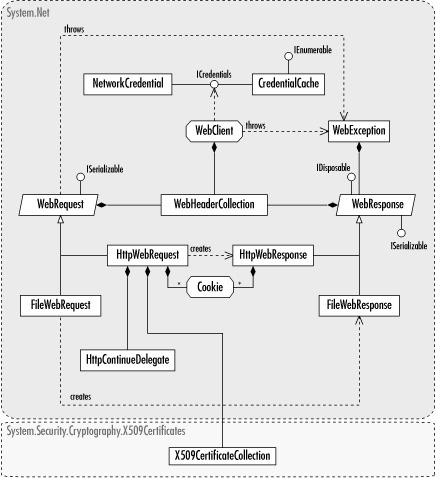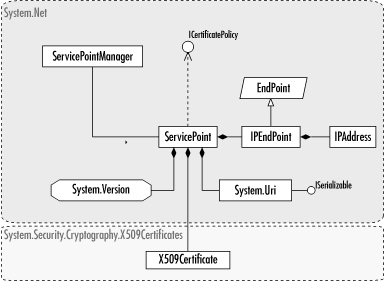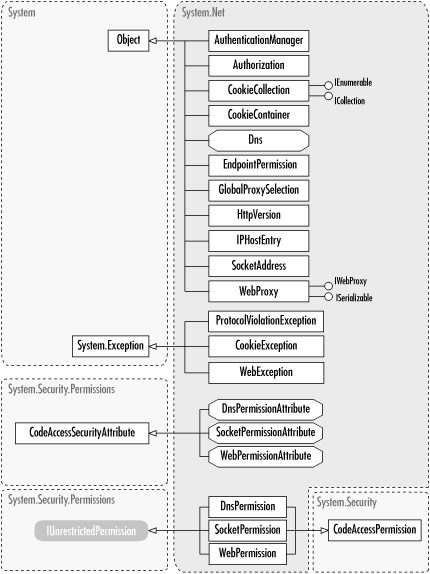| [ Team LiB ] |
|
Chapter 33. System.NetSystem.Net supports a high-level API for working with common Internet protocols (HTTP being the principal example) without having to deal with low-level details (such as the actual protocol format). In addition, this namespace provides some high-level constructs for working with networks—TCP/IP in particular. Most .NET programmers will work with either the WebClient type, which provides the most high-level view of doing HTTP-style request/response communications over a TCP/IP network (such as the Internet), or else the slightly lower-level WebRequest and WebResponse types. The choice between the two is really not all that difficult: for most high-level, protocol-agnostic work, WebClient will likely be the preferred choice. If protocol-specific actions need to be taken (such as specifying additional headers as part of an HTTP request, for example), then likely the .NET programmer will want to work with WebRequest and WebResponse. To be specific, the .NET programmer will work with the concrete derived types HttpWebRequest and HttpWebResponse. As shipped, the .NET Framework Class Library provides implementations for three URI protocol schemes: HTTP, HTTPS, and files (http:, https:, and file:, respectively). For support of other URI types (such as FTP, NNTP, or POP3), a new derivative of WebRequest and WebResponse must be written, an Abstract Factory type implementing the IWebRequestCreate interface must be created, and an instance of it (along with the protocol scheme prefix) must be registered with WebRequest.RegisterPrefix( ). Figure 33-1 shows the collaborations between the concrete classes HttpWebRequest, HttpWebResponse, FileWebRequest, and FileWebResponse. Figure 33-2 shows the composition of the ServicePoint class, and Figure 33-3 shows the remaining types in this namespace. Figure 33-1. The abstract WebRequest, WebResponse, and related concrete types Figure 33-2. Endpoints, service points, and associated types Figure 33-3. Other classes in the System.Net namespace |
| [ Team LiB ] |
|